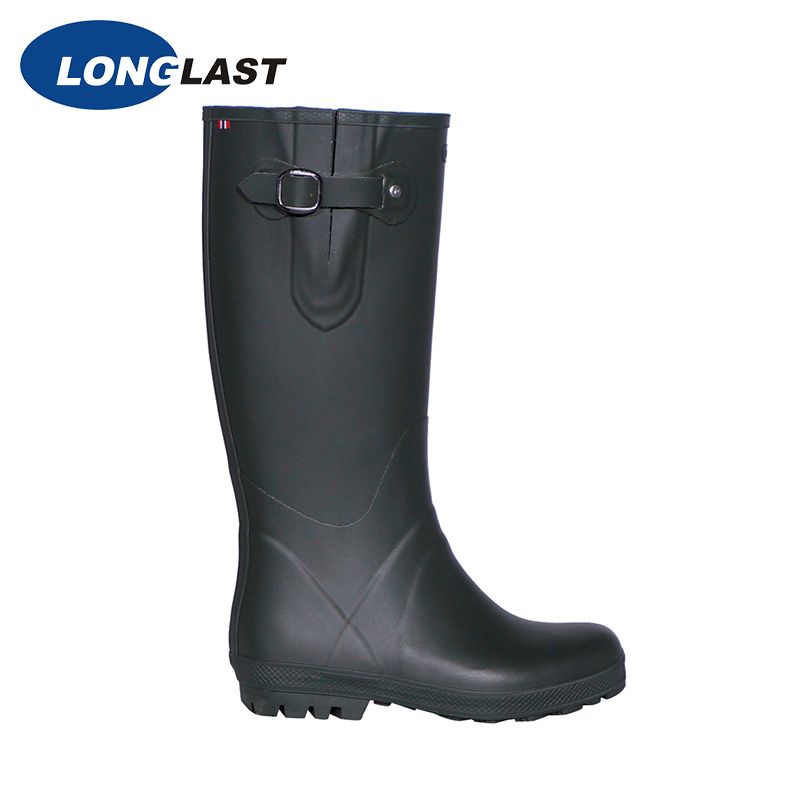Introduction
When it comes to choosing the right type of boots for various applications, it's important to understand the differences between PVC (Polyvinyl Chloride) and rubber boots. Both materials have their own unique characteristics and are commonly used in different industries and environments. In this article, we will explore the dissimilarities between PVC and rubber boots, highlighting their features, advantages, and best uses.
What is PVC?
PVC, or Polyvinyl Chloride, is a synthetic plastic polymer known for its versatility and durability. It is created by combining vinyl chloride monomers through a process called polymerization. PVC is widely used in various industries due to its excellent chemical resistance, low cost, and ease of manufacturing. The material can be molded into different shapes and sizes, making it suitable for a wide range of applications, including boots.
What is Rubber?
Rubber is a natural or synthetic elastic material that is derived from the latex of certain plants or produced through chemical synthesis. Natural rubber is obtained from the sap of rubber trees, while synthetic rubber is manufactured from petroleum-based compounds. Rubber exhibits excellent elasticity, flexibility, and waterproof properties, making it a popular choice for boots and other footwear.
Characteristics of PVC Boots
PVC boots offer several distinctive characteristics that make them suitable for specific purposes. Here are some key features of PVC boots:
Waterproof: PVC boots have excellent waterproof properties, protecting the wearer's feet from moisture and water-related hazards.
Chemical Resistance: PVC is highly resistant to a wide range of chemicals, making it ideal for industries that involve exposure to hazardous substances.
Durability: PVC boots are known for their durability and long lifespan. They can withstand harsh conditions, including extreme temperatures, without deteriorating.
Easy to Clean: PVC boots are easy to clean and maintain. They can be wiped or washed without causing damage to the material.
Affordability: PVC boots are generally more affordable compared to other types of boots, making them a cost-effective option for various applications.
Electrical Insulation: PVC is an excellent electrical insulator, providing protection against electric shocks in certain work environments.
Rubber boots also possess specific characteristics that set them apart from PVC boots. Here are some notable features of rubber boots:
Flexibility and Elasticity: Rubber boots are highly flexible and elastic, allowing for ease of movement and a comfortable fit.
Slip Resistance: Rubber has excellent slip-resistant properties, providing traction and stability even on slippery surfaces.
Heat Resistance: Rubber can withstand high temperatures without melting or deforming, making it suitable for industries that involve heat exposure.
Shock Absorption: Rubber absorbs impact and shock, offering enhanced protection and cushioning for the wearer.
Resistance to Abrasion: Rubber boots are resistant to abrasion, meaning they can withstand repeated friction without wearing out easily.
Oil Resistance: Rubber exhibits good resistance to oils and greases, making it ideal for certain work environments where exposure to such substances is common.

PVC vs. Rubber Boots: Comparison Table
To provide a quick overview of the differences between PVC and rubber boots, let's take a look at the following comparison table:
Features | PVC Boots | Rubber Boots |
Waterproof | Yes | Yes |
Chemical Resistance | Excellent | Good |
Durability | Excellent | Good |
Easy to Clean | Yes | Yes |
Affordability | More Affordable | Relatively Expensive |
Electrical Insulation | Yes | No |
Flexibility | Less Flexible | Highly Flexible |
Slip Resistance | Good | Excellent |
Heat Resistance | Limited | High |
Shock Absorption | Limited | Excellent |
Abrasion Resistance | Good | Excellent |
Oil Resistance | Limited | Good |
FAQs (Frequently Asked Questions)
Q: Are PVC boots suitable for use in extreme temperatures?
A: PVC boots have good temperature resistance, but they may not perform well in extremely high or low temperatures. It's advisable to check the manufacturer's specifications for the recommended temperature range.
Q: Can rubber boots protect against chemical exposure?
A: Rubber safety boots offer good resistance to a wide range of chemicals. They are often used in industries where workers are exposed to hazardous substances.
Q: Are PVC boots comfortable to wear for long periods?
A: PVC boots can vary in terms of comfort depending on their design and fit. It's recommended to choose boots with proper cushioning and support for extended periods of wear.
Q: Which type of boots is more suitable for slippery surfaces?
A: Rubber boots excel in slip resistance, offering better traction on slippery surfaces compared to PVC boots.
Q: Do rubber boots provide electrical insulation?
A: Rubber boots have excellent electrical insulation properties, making them a safer choice for electrical work compared to PVC boots.
Q: Can PVC and rubber boots be used interchangeably?
A: PVC and rubber boots have their own unique properties and best uses. While they may have some overlap in terms of applications, it's important to consider the specific requirements of each situation.
Conclusion
In conclusion, PVC and rubber boots are distinct in their characteristics, offering different benefits depending on the intended use. PVC boots are known for their chemical resistance, affordability, and durability, while rubber boots excel in flexibility, slip resistance, and shock absorption. Understanding the differences between these materials allows individuals to make an informed decision based on their specific needs. Whether it's for industrial work, outdoor activities, or personal use, selecting the appropriate type of boot ensures optimal comfort, protection, and performance.





Comments
All Comments ( 0 )